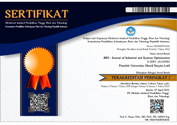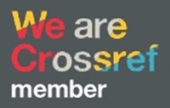SCHEDULING EVALUATION OF CONSTRUCTION PROJECT USING FUZZY LOGIC APPLICATION FOR SCHEDULING (FLASH) METHOD
DOI:
https://doi.org/10.51804/jiso.v7i1.31-38Keywords:
construction project, fuzzy logic, project scheduling, three estimation timeAbstract
For the running of a project, it is necessity to have project planning such as project schedule. PT Ometraco Arya Samanta is a company that engaged in steel structure. This company implement schedule planning based on tonnage. This method is considered suboptimal, since in its implementation has discrepancy of completion time between the schedule plan and the actual. To get an optimal schedule, it needs appropriate method. Construction project is a complex project and has uncertainty completion time. Project Evaluation and Review Technique (PERT) and Fuzzy Logic Application for Scheduling (FLASH) could be used for projects with uncertain completion time and more emphasis on time estimation than cost. PERT and FLASH are using three estimation time, then obtained probability percentage of completion time. Nevertheless, PERT is only consider the completion time by the critical path, while FLASH is able to determine project time by the entire project activities. Thereby, the methods used in this article is FLASH. The analysis results of this case study as follows: the interval completion time with FLASH in the amount of 106 days for optimistic time, 237 days for pessimistic time, and 169 days for most likely time. By the duration target of 179 days, it is obtained 85,29%.
Dalam pengerjaan suatu proyek diperlukan perencanaan proyek berupa penjadwalan proyek. PT Ometraco Arya Samanta merupakan perusahaan konstruksi baja. Perusahaan ini memanfaatkan penjadwalan berdasarkan tonase proyek. Metode tersebut dirasa belum optimal, sebab dalam pelaksanaannya sering kali terjadi ketidaksesuaian waktu penyelesaian proyek antara rencana dengan aktualnya. Untuk mendapatkan penjadwalan yang optimal, diperlukan metode yang tepat. Proyek konstruksi merupakan proyek yang kompleks dan memiliki durasi penyelesaian yang bersifat tidak pasti. Project Evaluation and Review Technique (PERT) dan Fuzzy Logic Application for Scheduling (FLASH) dapat digunakan untuk proyek yang memiliki ketidakpastian waktu dan menekankan pada estimasi waktu daripada biaya. PERT dan FLASH menggunakan tiga estimasi waktu yang kemudian didapatkan persentase kemungkinan terselesaikannya proyek. Namun, PERT hanya memperhitungkan waktu penyelesaian proyek berdasarkan lintasan kritis, sedangkan FLASH dapat mempertimbangkan waktu proyek dari keseluruhan kegiatan proyek. Sehingga, metode yang digunakan di dalam artikel ini adalah FLASH. Hasil analisis dari penelitian ini didapatkan selang waktu penyelesaian proyek yaitu waktu paling cepat 106 hari, waktu paling lama 237 hari, dan waktu paling mungkin sebesar 169 hari. Dengan menggunakan waktu target 179 hari, didapatkan probabilitas sebesar 85,29% dari rentang waktu 169 hari hingga 237 hari.
References
Ashwini Mate, M. A., & Keswani, I. P. (2014). Scheduling By Using Fuzzy Logic in Manufacturing. International Journal of Engineering Research and Applications, 4(7), 104–111.
Devi, T. R., & Reddy, V. S. (2012). Work Breakdown Structure of the Project. International Journal of Engineering Research and Applications, 2(2), 683–686.
Elizabeth, S., & Sujatha, L. (2013). Fuzzy critical path problem for project network. International Journal of Pure and Applied Mathematics, 85(2), 223–240. https://doi.org/10.12732/ijpam.v85i2.4
Firstdhitama, W., Suastika, I. K., & Ma’ruf, B. (2018). Perencanaan Penjadwalan Reparasi Kapal Ferry Dengan Menggunakan Metode Flash. Jurnal Wave: Jurnal Ilmiah Teknologi Maritim, 12(1), 1–12. https://doi.org/10.29122/jurnalwave.v12i1.2869
Gonaly, B., & Shtub, A. (2001). Handbook of Industrial Engineering: Technology and Operations Management (pp. 1264–1277). John Wiley & Sons, Inc.
Hakim, T., Maharani, A., & Rachman, F. (2021). Optimalisasi Penjadwalan Proyek Modern Rice Milling Plant (MRMP) Menggunakan Metode Project Evaluation Review Technique (PERT). Proceedings Conference on Design Manufacture Engineering and Its Application, 5(1), 294–298.
Lee, K. H. (2005). First course on fuzzy theory and applications. Springer.
Rani, H. A. (2016). Manajemen Proyek Konstruksi. Available from https://elearning.umj.ac.id/pluginfile.php/75285/course/overviewfiles/kuliah ke 9 Manj. proy. konstr..pdf?forcedownload=1
Santosa, B. (2009). Manajemen Proyek (Konsep dan Implementasi). Graha Ilmu.
Trisiana, A., Arifin, S., & Effendy, K. (2020). Penjadwalan Ulang Pekerjaan Finishing Proyek Shangrila Hotel Resort and Spa Menggunakan Metode PERT dan FLASH. Jurnal Rekayasa Teknik Sipil Dan Lingkungan, 4, 119–130.
Vizkia, N., Farela, C., & Tantrika, M. (2014). Perbandingan Metode PERT Dan Fuzzy Logic Application For Schedulling (FLASH) Pada Penjadwalan Proses Fabrikasi Boiler (Studi Kasus: PT Indonesian Marine Corp. Ltd.). Jurnal Rekayasa Dan Manajemen Sistem Industri, 2, 482–494.
Widiasanti, I., & Lenggogeni. (2013). Manajemen Konstruksi.
Downloads
Published
Issue
Section
License
Copyright (c) 2024 JISO : Journal of Industrial and Systems Optimization

This work is licensed under a Creative Commons Attribution-ShareAlike 4.0 International License.
With the receipt of the article by JISO Editorial Board and the decision to be published, the copyright regarding the article will be transferred to JISO. The copyright transfer form can be downloaded here.
JISO has the right to multiply and distribute the article and every author is not allowed to publish the same article that was published in this journal.
JISO is licensed under a Creative Commons Attribution-ShareAlike 4.0 International License.
Under the following terms:
Attribution — You must give appropriate credit, provide a link to the license, and indicate if changes were made. You may do so in any reasonable manner, but not in any way that suggests the licensor endorses you or your use.
ShareAlike — If you remix, transform, or build upon the material, you must distribute your contributions under the same license as the original.














